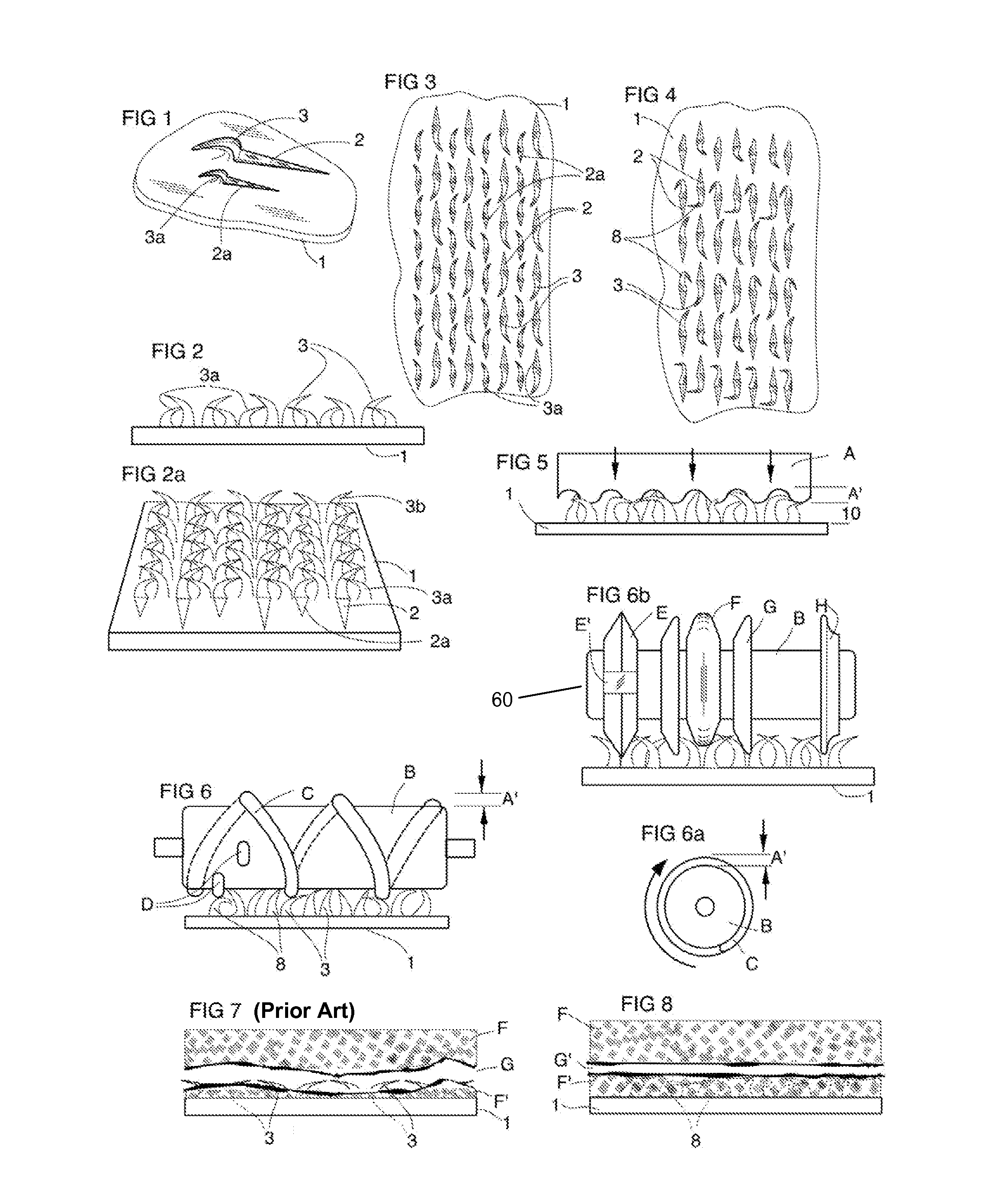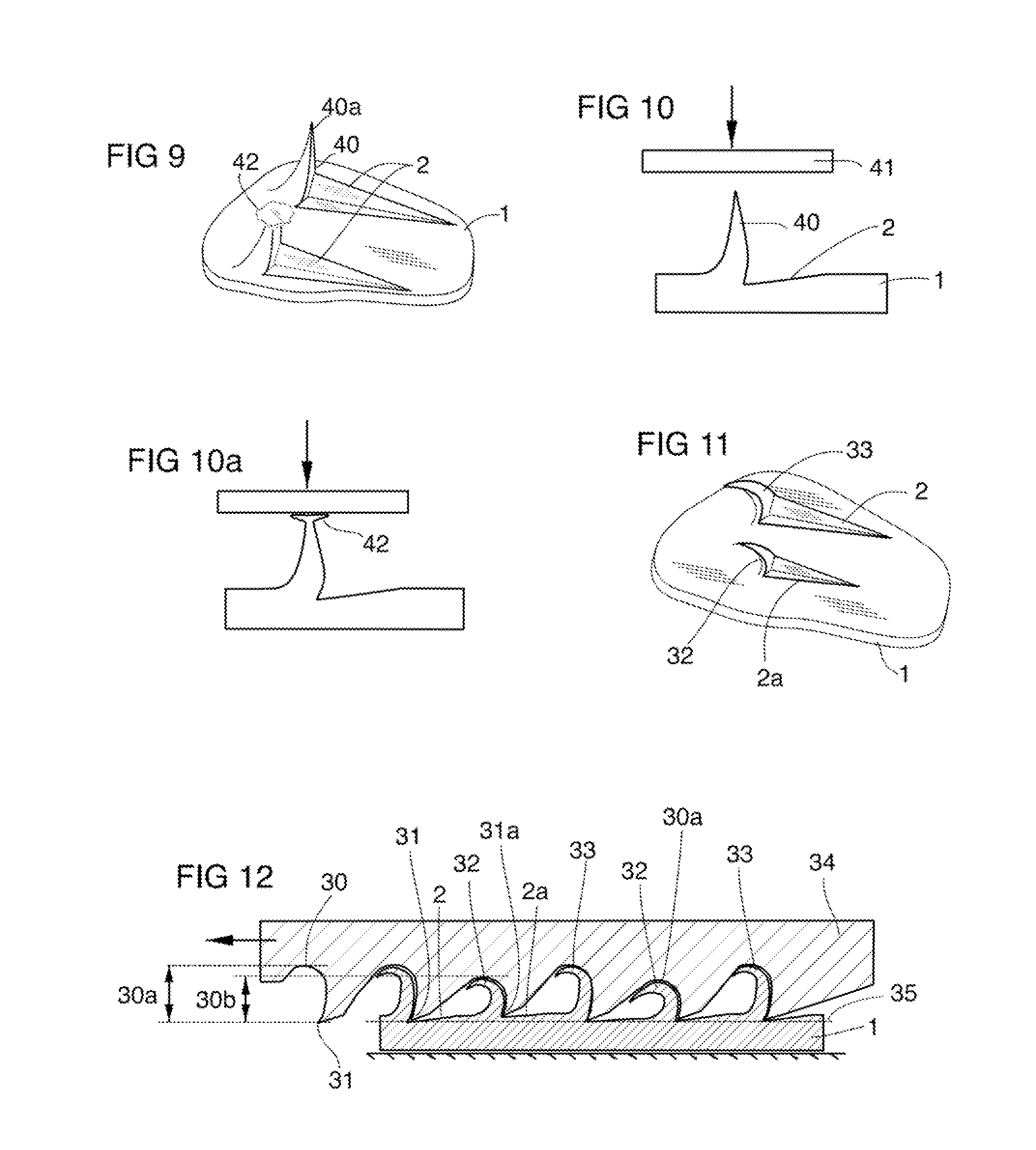Material with variable height barbs
a technology of variable height and barbs, applied in the field of textured materials, can solve the problems of many known deficiencies of adhesives, high cost, noxious fumes, etc., and achieve the effects of reducing the number of adhesives used in laminating heterogeneous materials, and reducing the number of adhesives used
- Summary
- Abstract
- Description
- Claims
- Application Information
AI Technical Summary
Benefits of technology
Problems solved by technology
Method used
Image
Examples
Embodiment Construction
[0045]Barbs are generally curved and pointed structures, which may be relatively sharp, that can be added to ductile materials by, for example, using blades with multiple teeth that are made to travel from opposite directions whereby the teeth gouge (or cut or plane or impact) a flat face of the ductile material, cutting to a shallow depth and for a short distance. In this way a short, shallow (non-piercing) tapered groove is ploughed, resulting in an un-severed projection (the barb) being raised at the end of each groove. Such barbs are generally formed on a flat face of a base workpiece, such as on one side of a sheet of steel.
[0046]The term “substantially flat face” is intended to describe the face before and after the integral barbs have been raised from a completely flat face since the grooves are relatively shallow and the remainder of the face remains completely flat.
[0047]The term “base workpiece” as used herein refers a piece of ductile material, such as sheet of steel, tha...
PUM
| Property | Measurement | Unit |
|---|---|---|
| Fraction | aaaaa | aaaaa |
| Fraction | aaaaa | aaaaa |
| Fraction | aaaaa | aaaaa |
Abstract
Description
Claims
Application Information
 Login to View More
Login to View More - R&D
- Intellectual Property
- Life Sciences
- Materials
- Tech Scout
- Unparalleled Data Quality
- Higher Quality Content
- 60% Fewer Hallucinations
Browse by: Latest US Patents, China's latest patents, Technical Efficacy Thesaurus, Application Domain, Technology Topic, Popular Technical Reports.
© 2025 PatSnap. All rights reserved.Legal|Privacy policy|Modern Slavery Act Transparency Statement|Sitemap|About US| Contact US: help@patsnap.com



